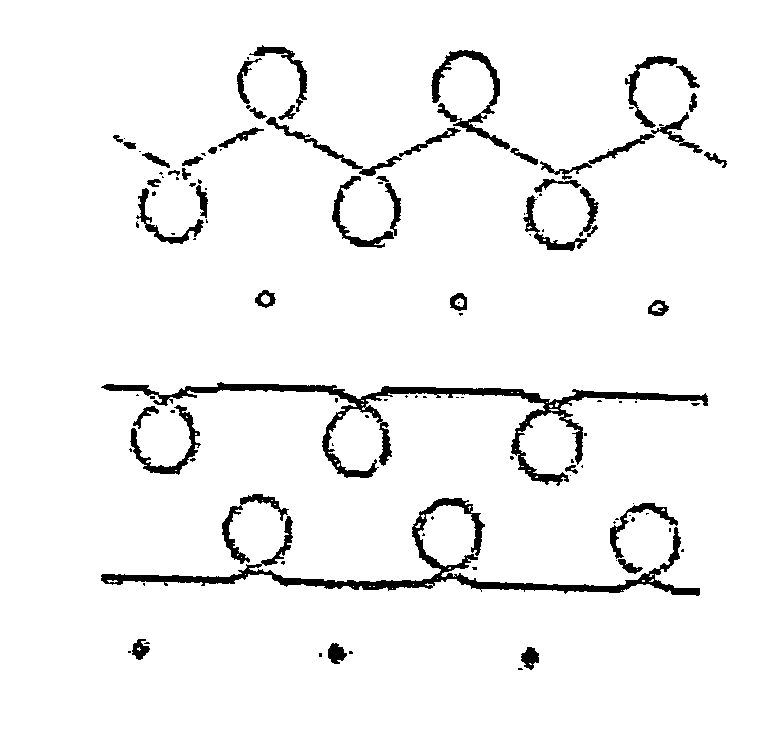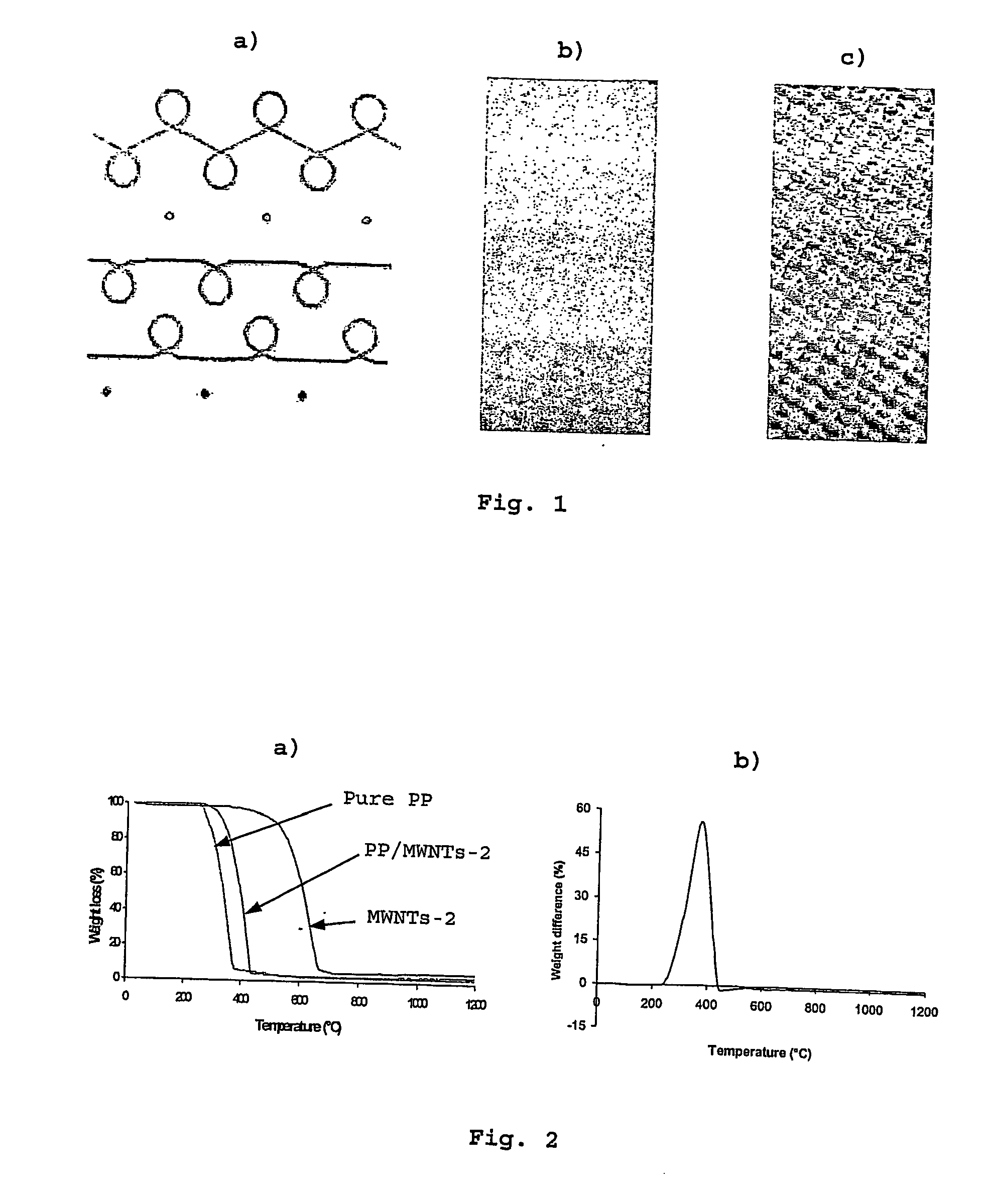Continuous textile fibers and yarns made from a spinnable nanocomposite
a technology of nanocomposites and textile fibers, which is applied in the direction of transportation and packaging, natural mineral layered products, chemistry apparatus and processes, etc., can solve the problems that the conditions needed for a good dispersion of charges are not universal, and achieve the effect of improving thermal and fire stability
- Summary
- Abstract
- Description
- Claims
- Application Information
AI Technical Summary
Benefits of technology
Problems solved by technology
Method used
Image
Examples
Embodiment Construction
I. Description of the Starting Materials
[0054] A) Polymers
[0055] The polymers that can be used are selected from polyolefins (like polypropylene (further abbreviated as PP), polyethylene (PE), etc.), thermoplastic polymers (like polystyrene, etc.), vinylic polymers (like PVC or PVDF), acryl-nitrile polymers, polyacrylates, elastomers, fluoro polymers, thermoplastic polycondensates (like PA, PC, PETP), duroplastic polycondensates, silicon resins, thermoplastic elastomers, co- and ter-polymers, grafted polymers and also their blends. All these materials are well known in the art.
[0056] A summary of suitable polymers can be found in: Hans Dominghaus “Die Kunststoffe und ihre Eigenschaften” 2 Auflage, VDI-Verlag, Seite VII bis XI.
[0057] B) Nanotubes
[0058] The carbon nanotubes may be single-wall carbon nanotubes (SWNTs), multiple-wall carbon nanotubes (MWNTs) or their mixtures.
[0059] These carbon nanotubes may be either pure, partly purified, or crude.
[0060] Crude nanotubes contain...
PUM
| Property | Measurement | Unit |
|---|---|---|
| diameter | aaaaa | aaaaa |
| temperature | aaaaa | aaaaa |
| weight ratio | aaaaa | aaaaa |
Abstract
Description
Claims
Application Information
 Login to View More
Login to View More - R&D
- Intellectual Property
- Life Sciences
- Materials
- Tech Scout
- Unparalleled Data Quality
- Higher Quality Content
- 60% Fewer Hallucinations
Browse by: Latest US Patents, China's latest patents, Technical Efficacy Thesaurus, Application Domain, Technology Topic, Popular Technical Reports.
© 2025 PatSnap. All rights reserved.Legal|Privacy policy|Modern Slavery Act Transparency Statement|Sitemap|About US| Contact US: help@patsnap.com



